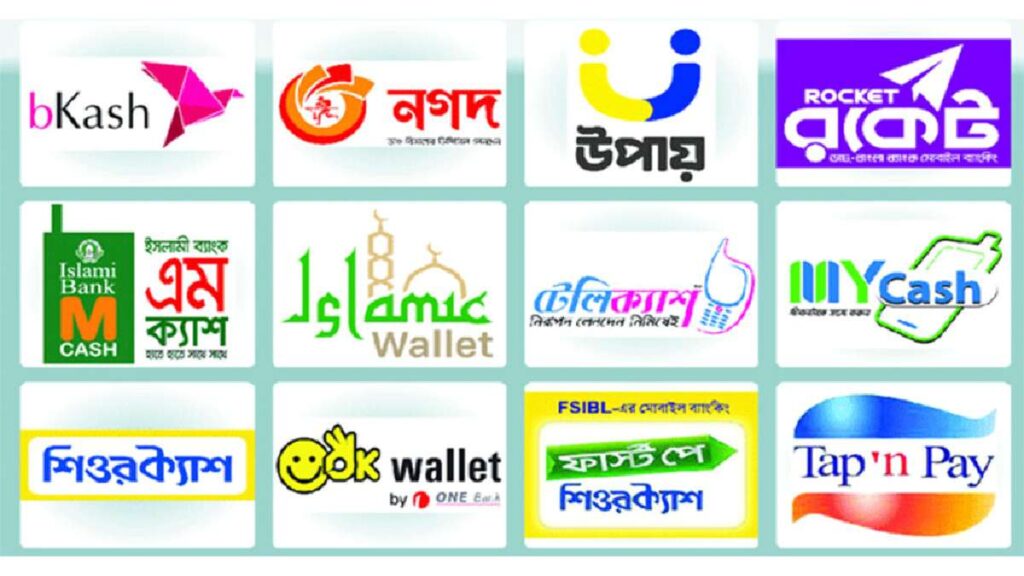Dhruba Sarker and Dr. Mizanur Rahman
In Bangladesh, the mobile payment revolution is in full swing: millions of citizens now hold accounts with services like bKash or Nagad. But there’s a catch: none of these accounts belong to licensed banks. In a country of 170 million people, that means roughly 40% have mobile wallet accounts, a massive outreach achieved without a single new bank. Is regulatory inertia preventing us from advancing to fintech’s next frontier: digital banks (neobanks)?
For context, our biggest MFS operator, bKash, alone has roughly 60 million accounts, and Nagad about 30 million – numbers that dwarf many banks’ customer lists. These platforms process tens of billions of taka each year. Cash-in and cash-out through local agents and smartphone apps has brought convenience to both city-dwellers and villagers. Even rickshaw drivers and street vendors use MFS for small transactions. The wallets are wildly popular because they require little paperwork and connect many people who were previously unbanked.
But mobile wallets have clear limits. For example, a Dhaka shopkeeper might use bKash to transfer daily sales to her family, but when she needs a small loan, she still must queue at a distant bank branch with paperwork. Wallets allow only low balances, pay no interest, and can’t issue loans or gather savings beyond low caps. In short, they function only as wallets, the true banking services still demand a branch visit.
Now the timing is crucial. Bangladesh Bank has begun consultations on issuing digital bank licenses. These “e-bank” licenses would allow fully online banks — institutions with few or no branches, serving customers entirely through apps and agents. This is part of the government’s push for a “Smart Bangladesh” and aims to boost inclusion. If regulators open the door, fintech entrepreneurs could turn our mobile-wallet network into a genuine banking system accessible via phones.
Some will ask: why rush? Our traditional banks already offer online services. True, if all you need is to send money or pay bills, MFS works. But this misses the bigger potential. Legacy banks often move slowly and focus on larger clients, leaving millions of poor and rural Bangladeshis underserved. They also provide little competition to fintech startups. By contrast, agile digital challengers can tailor services to low-income users and shake up the market.
Globally, regulators in emerging markets are already bridging this gap. Pakistan and Indonesia have granted digital bank licenses to spur competition, and India’s new neobanks signed up millions of customers within months. These countries show that data-driven, app-focused banks can reach small entrepreneurs and rural communities. Bangladesh also has tech-savvy youth, broad mobile coverage, and a growing fintech ecosystem, all ingredients for digital banks to thrive here. In fact, Bangladesh has often leapfrogged infrastructure hurdles through mobile tech: the population is largely mobile-savvy, so we simply need to add full banking functions.
Caution is wise: stability and safety come first. Fintech failures abroad (from cyber-attacks to predatory lending) remind us of the risks. But the solution is oversight, not shutdown. Bangladesh Bank already runs a fintech sandbox for new payment products; the same approach could extend to digital banks. For example, a regulated sandbox could let startups pilot neobank services under the central bank’s watchful eye. This balances innovation with safeguards, so new ideas can be tried without endangering depositors.
Another powerful tool is open banking. If banks and MFS providers publish secure APIs, third-party developers could build new services around customer accounts. Europe’s PSD2 directive did this, unleashing a flood of fintech innovation. Bangladesh could adapt the model: with customer consent, a digital bank would share transaction data (not passwords) with a trusted app. That means someone could use an intelligent budgeting tool or loan-matching service that plugs directly into her account.
With these advances, strong guardrails are essential. Any new digital bank must meet clear licensing and capital standards, with all deposits insured by our national scheme. KYC and AML rules must stay robust; digital banks should leverage e-ID and multi-factor authentication. Financial literacy and fast complaint-resolution will also be key, so consumers trust these new services and know where to turn if something goes wrong.
In conclusion, Bangladesh stands at a fintech crossroads. Nearly half the population now uses mobile money, a leap we should celebrate. But the true prize lies ahead. Converting those 70 million wallets into gateways for full-fledged digital banking could yield huge benefits: deeper access for the unbanked, faster commerce, and empowered entrepreneurs of all sizes. Remember, currently fewer than half of Bangladeshis have any formal bank account. Letting inertia hold us back would squander our hard-won momentum. Now regulators must choose innovation (with safeguards) over delay.
Dhruba Sarkar is a Teaching Assistant and Dr. Mizanur Rahman is Assistant Professor at Brac Business School, Brac University


